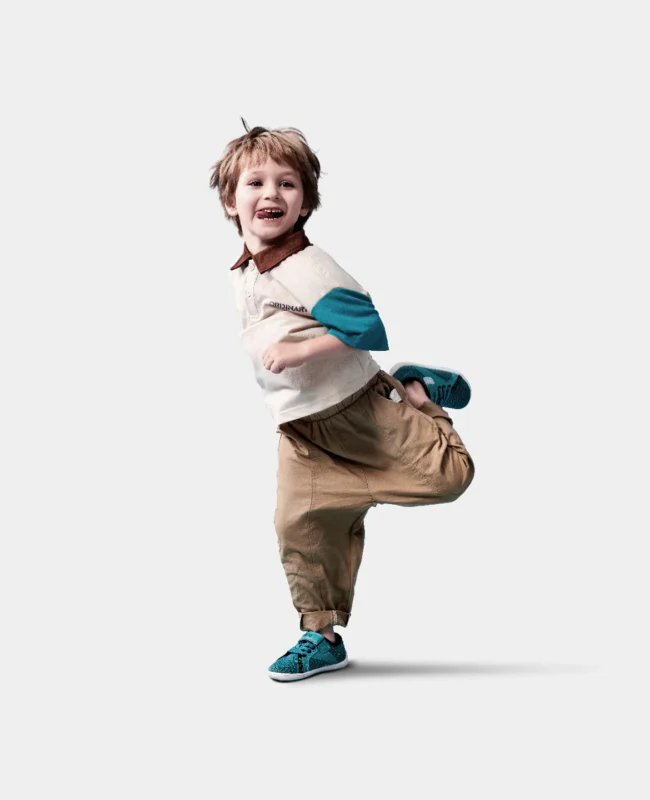Understanding your foot type is crucial for selecting the right shoes that support your health and lifestyle. Many people don’t realize that their feet can have unique characteristics shaped by nature or altered over time due to improper footwear. In this article, we’ll guide you through identifying your foot type and finding the perfect shoes to match.
Why Understanding Your Foot Type Matters
Your foot type affects more than just comfort. It influences your posture, balance, and even long-term health. Wearing shoes that don’t align with your foot type can lead to issues like joint pain, poor circulation, or long-term deformities. By identifying your foot type, you can:
- Enhance overall comfort.
- Prevent foot-related health problems.
- Improve performance in physical activities.
- Enjoy longer-lasting footwear tailored to your needs.
Learn why barefoot shoes are great for foot health.
Natural Foot Types
1. Fin-Shaped Feet
Fin-shaped feet taper dramatically, with the big toe being the longest and the rest gradually shortening. This foot type often requires shoes with a wide toe box to prevent crowding and discomfort.
2. Straight Feet
Straight feet have toes of similar length, making the foot appear more rectangular. This type benefits from shoes with even width throughout the sole and good arch support.
3. Square Feet
Square feet have toes of nearly the same length, creating a broad front profile. These feet need shoes with a wide, square-shaped toe box for proper alignment and comfort.
Foot Types Altered by Footwear
1. Overpronation
Overpronation occurs when the foot rolls inward excessively while walking or running. This is often caused by poorly fitting shoes that lack proper arch support.
Recommended Shoes: Barefoot shoes with stability features and arch support.
2. High Arches (Cavus Foot)
High arches result in more weight being placed on the ball and heel of the foot. This can be due to genetics or wearing rigid, poorly cushioned shoes.
Recommended Shoes: Flexible shoes with ample cushioning.
3. Bunions
Bunions develop when the big toe is forced inward, often due to narrow, pointed shoes. Over time, this can lead to pain and visible deformities.
Recommended Shoes: Barefoot shoes with extra width and no heel elevation.
Shop shoes designed for bunions.
How to Determine Your Foot Type
- The Wet Test:
- Wet your feet and step on a piece of paper or flat surface.
- Examine the imprint to identify the arch and width.
- Observe Toe Shape:
- Check the length and alignment of your toes.
- Consult a Specialist:
- A podiatrist can analyze your feet and recommend appropriate footwear.
Learn how to measure your feet accurately.
Choosing the Right Shoes for Your Foot Type
- For Fin-Shaped Feet: Look for wide toe boxes and flexible soles.
- For Straight Feet: Opt for evenly shaped shoes with good arch support.
- For Square Feet: Ensure sufficient width in the toe box.
- For Overpronation: Choose shoes with extra stability.
- For High Arches: Select cushioned shoes for even weight distribution.
- For Bunions: Prioritize wide, flat shoes that alleviate pressure.
Browse our full shoe collection.
Shop Shoes by Foot Type
We’ve made it easy to find the perfect shoes for your foot type:
- Shoes for Fin-Shaped Feet
- Shoes for Straight Feet
- Shoes for Square Feet
- Shoes for Overpronation
- Shoes for High Arches
- Shoes for Bunions
Conclusion
Understanding your foot type is the first step toward healthier, more comfortable walking. Whether you have naturally shaped feet or those altered by years of wearing unsuitable footwear, there’s a perfect shoe waiting for you. Take the time to measure your feet, explore your options, and invest in shoes that truly support your unique needs.
Your feet deserve the best—shop by foot type today and experience the difference!



